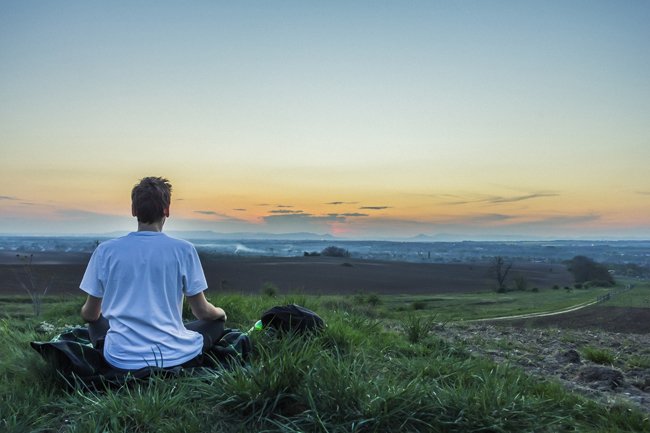
The Mantra and Silence in Christian Meditation
(Adapted from a formation talk by Rev. Dom Pachomius Ma. San Juan, OSB on November 18, 2017)
Christian meditation, as originally practiced by the desert fathers and taught by John Main, is essentially a mantra-based prayer. Because of its similarity to Eastern meditation practices and the foreignness of its approach to most Christians, it might easily be dismissed as an exotic method, just a therapy for relaxation. This is an unfair judgement.
The tradition of the mantra
The mantra is an ancient tradition, not limited to Buddhism or Hinduism.
- Judaism had the custom to bless the Lord at all times.
- In early Christianity, the Lord’s prayer was not the prayer that we know. It was a series of short, rhythmic phrases. The Orthodox tradition of Christianity had the Jesus prayer, the repetition of a prayer verse, “Lord Jesus Christ, Son of God, have mercy on me, a sinner.”
- In the Gospel of Matthew, in the agony in the garden, all Jesus could utter was the Father’s name.
- In later Christian writings, particularly represented by The Cloud of Unknowing, it was said, “Pray with a little word of one syllable. With this word you will suppress all thoughts.”
“With this word you will suppress all thoughts.”
British Abbot John Chapman credited John Cassian for bringing the enduring prayer of the mantra into Benedictine teaching. In John Cassian’s words, “No one is kept away from purity of heart if only they will be constant in repeating this phrase, it is enough to keep their mind and heart attentive to God.”
The mantra is a tradition very much planted in the soil of Christian mysticism. The mantra is pure simplicity, stillness. It leads to a harmonious, attentive stillness of spirit, mind and body. Maranatha is our love word, an ancient Aramaic prayer, possibly the oldest Christian prayer.

The prayer of silence
Silent prayer is not a recent innovation or fad of our times. Fourteenth century mystic Walter Hilton said, “Do nothing. Allow Him to work in your soul.” Teresa of Avila averred that “In prayer, all we need to do is dispose ourselves to welcome the action, the power of the Holy Spirit.” And even earlier, it was taught by St. Paul in his letter to the Romans, “We do not know what to say…it is the Spirit who prays for us.”
Authentic prayer
To pray, first you must be still. You must concentrate. Authentic prayer starts with stillness, concentration and centering. Once attentive, we enter into the prayer of quiet, non-discursive, contemplative prayer. The prayer of quiet is non-thinking, non-analyzing, non-reluctance.
Genuine prayer is less of talk and more of listening, not as much about looking for as being found. The more familiar approach has always been largely active, but Christian meditation highlights the “being” part and less of the “to do” dimension.
“It is always God’s action first.”
God talks and we listen. God looks till we are found. It is always God’s action first. The initiative is not ours. When you come to prayer, it is God who invites, beckons, seduces. Because we can’t resist the call, we find ourselves gravitating to it. And once we enter the void, we are caught in a deep embrace. We enter into a deep awareness that we are loved and cherished despite our unworthiness. We see God through the eyes of love.